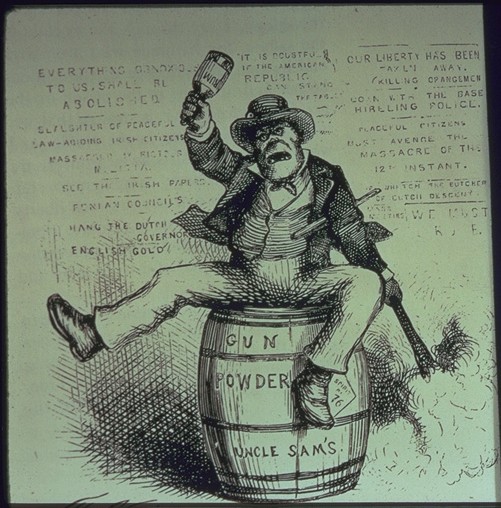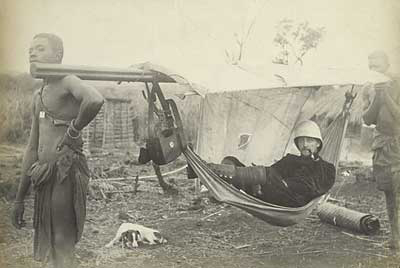Race has been in the news again quite a bit recently. Paula Deen, a celebrity chef, was refreshingly honest about her racism, and is now out of a job. A couple of months ago one Jason Richwine also lost his job due to his racist beliefs. Richwine is the more interesting case--he didn’t use racial slurs, but instead disguised his racism in the borrowed clothing of science. To sum, the Washington Post discovered that Richwine, the coauthor of a prominent Heritage Foundation study on immigration, received his doctorate from Harvard on the basis of a dissertation that, even by Heritage Foundation standards, was jaw-droppingly racist. The Heritage Foundation hastily showed Richwine the door. When I feel down, I like to imagine the awkward after-the-fact discussions at Harvard as to how they produced a PhD with a dissertation that was too nutty even for the Heritage Foundation.
The public and media response to Richwine makes a striking contrast with the reception of the infamous The Bell Curve: Intelligence and Class Structure in American Life in 1994. There was much more public controversy over Murrary and Herrnstein’s work than there was over Richwine’s similar work today. Charles Murray has noticed this, but blamed it on the Heritage Foundations lack of “balls” compared to the American Enterprise Institute, where Murray happens to lair. He’s wrong, of course. He’s Charles Murray. Dominant attitudes in US society have changed for one thing. Another thing that has changed is the availability of information (i.e., the Internet). The scientific critiques of the work of people like Richwine are far more accessible to the public than they were in the 1990s.
However there still seems to be strong popular suspicion that opposition to racial research is based on political beliefs rather than science. You can see this in, for example, Andrew Sullivan’s defence of (fellow wonk) Jason Richwine or skeptic Harriet Hall’s enthusiastic discussion of Berezow and Campbell’s Science Left Behind: Feel-Good Fallacies and the Rise of the Anti-Scientific Left--“Scientifically studying gender or racial differences is discouraged, if not completely taboo. It would be politically incorrect to find evidence suggesting that abilities are not fairly distributed.”
One can point to a number of reasons that opposition to scientific racism is seen as ideological—the persistence of racial attitudes, the popularity of sociobiology and genetic determinism in the media, Libertarian political ideologies and the conequent need to explain long-term racial socio-economic inequality in a perfect economy, and so on. But one simple, and I think easily-addressed, popular misconception is the idea that the study of human biological variation is the study of race—to deny the biological reality of race is to deny the biological reality of human variation. Andrew Sullivan presents a good example of this kind of thinking.
But the idea that natural selection and environmental adaptation stopped among human beings the minute we emerged in the planet 200,000 years ago – and that there are no genetic markers for geographical origin or destination – is bizarre. It would be deeply strange if Homo sapiens were the only species on earth that did not adapt to different climates, diseases, landscapes, and experiences over hundreds of millennia. We see such adaptation happening very quickly in the animal kingdom. Our skin color alone – clearly a genetic adaptation to climate – is, well, right in front of one’s nose.To sum, “race exists because…um…evolution does.”
This is a misconception that scientific racists ( recently "race realists" but now Human Biodiversity (HBD) advocates) exploit. The problem here is confusion between “race” and “population.” Scientific racists, as well as a few well-meaning, but possibly tone-deaf, scientists, will use the two interchangeably. Since “race” is an empty term, this is easy to do. A researcher may write about “race” while defining it the same way as “population” (for whatever reason), and then be surprised when their work is lauded on Stormfront and shows up on the HBD Bibliography. The simple fact is, if you want to use the word “race” you are not going to be able to separate it from its historical and social baggage. You know what it means, so don’t use it.
So what is “Race”?
Race is a vague folk concept, and like most folk concepts, is hard to scientifically pin down and operationalize . Basically it seems to be a bounded group of people with a similar "genetic makeup." Each race has a distinct genetic lineage with great historical depth (i.e. races are fixed and primordial units of human division). The human race is divided into a fixed number of races, usually five or six, (but there are taxonomies with many more). The standard taxonomy comes straight from the 18th-century classification--Caucasoid, Mongoloid, Negroid, etc.--but with more p.c. terminology (White, Asian, Black). Races usually have inherently different traits and abilities, usually labor-based—different races are suited for different tasks.
And what is "Population"?
A population is a local interbreeding group ("interbreeding" meaning that partners are found within the group more often than outside the group). Populations are definable entities. They are local, and the edges are (usually) clinal, fuzzy and indistinct as opposed to sharply bounded. On every continent you can have thousands and thousands of populations, moving around, dying out, forming new populations, and combining with other populations--doing all the things people do to screw up neat ideological categories.
Populations are also heriarchically organized. That people reproduce with other people in the same vicinity means how you define a "population" depends on how you define the vicinity. There is going to be population variation at a continental scale. But this is NOT the same thing as race.
So if races don't (biologically) exist, why are there individual genetic differences between "races"?
Human variation is complex, multidimensional, and historically and environmentally patterned. If you have a sufficiently complex set of patterned data, and you draw random lines through it, dividing it into X parts, the parts you create will differ, especially if you cherry pick the data carefully enough. To use an analogy, think of a mosaic. It is patterned, it is complex, and it tells a story. Now randomly draw lines through it, dividing it into four parts. The colouring and constituents of those four parts are, mirabile dictu, going to be different. You now have five parts that are "scientifically proven” to be different. And you have lost the true richness of the story.
Race is not the same as population, and the existence of populations does not any way demonstrate the existence of races.
Racial Science as Pseudoscience
John Horgan half-jokingly asks "Should research into race and IQ be banned?". Massimo Pigliucci concludes a recent article by asking “When is enough enough?” It is time to start asking this question.
The simple fact is scientific racialism is a degenerate research program, now largely the province of zealots cocooned in right-wing think tanks. Its proponents have spent the last 200 years lurching from dataset to dataset, technology to technology, arguing that each new thing is going to be THE thing that finally proves that their object of study actually exists, but never pulling it off. And the human consequences of their research have been dire. I know of no legitimate research program that has gotten a pass like this.
 |
| At the Kaiser Wilhelm Institute for Anthropology, Human Genetics, and
Eugenics, a racial hygienist measures a woman's features in an attempt
to determine her racial ancestry. Berlin, Germany, date uncertain.
— National Archives and Records Administration, College Park, Md. (from the US Holocaust Memorial Museum)
|
Scientific racism shouldn't be banned, but it is time for it to join research in cold fusion, homeopathy, and psi on the scholarly fringes.
--------------------------------------------------
References
Hall, Harriet
2013 Progressive Mythology. Science-Based Medicine. May 21. http://www.sciencebasedmedicine.org/progressive-mythology/
Horgan, John
2013 Should Research on Race and IQ Be Banned? Cross-Check, Scientific American Blog Network. May 16. http://blogs.scientificamerican.com/cross-check/2013/05/16/should-research-on-race-and-iq-be-banned/.
Pigliucci, Massimo
2013 What Are We to Make of the Concept of Race?: Thoughts of a Philosopher–scientist. Studies in History and Philosophy of Science Part C: Studies in History and Philosophy of Biological and Biomedical Sciences. http://www.sciencedirect.com/science/article/pii/S1369848613000447.
Sullivan, Andrew
2013 Race and IQ. Again. The Dish, May 14. http://dish.andrewsullivan.com/2013/05/14/is-christopher-jencks-a-racist/







